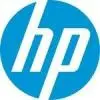z/OS - nothing better
- Massive I/O
- Support many users concurrently
- Very little downtime required.
Cons
- It's hard finding new people with the required knowledge.
- It seems expensive.
- Very little down time
- Massive i/o
- We've always used z/OS for these applications. Every attempt to even plan using a different system failed very early in the initial stages for various reasons.
The initial assessment failed because of cost.
CICS specialists,
DBA's
- Run monthly payroll calculations
- Create pay slips with personal messages
- Importunely, the powers that be want to move us of z/OS
- Other
Along the way, other options have become available, but none were good enough.
- Implemented in-house
- None that I know
- Online Training
- In-Person Training
I realized the an important function (STP - the function that lets z/OS get the accurate time from the network) wasn't working.
After trying to solve the problem on my own, I opened a Severity 1 issue.
I was online with support teams from around the world until they found a way to bypass the problem so I put the computer into production.
- The builtin editor is great
- Monitoring system activity is easy with SDSF
- There a products to do anything you would need. Usually more than one option for each task.
- Configuring a new system.
There are also other options.
- Many other systems running Windows or *nix
It can be a web server, a database server, an ftp server, or almost any other kind of server.
It can publish it's features as web services, or as other types of services.
- Nothing new
- File import/export
- API (e.g. SOAP or REST)
If there is more than one option, evaluate more than one.
Since we're in a small market, there is only one.
- A new system with some new functions
- Lower software costs.
- More of the same





